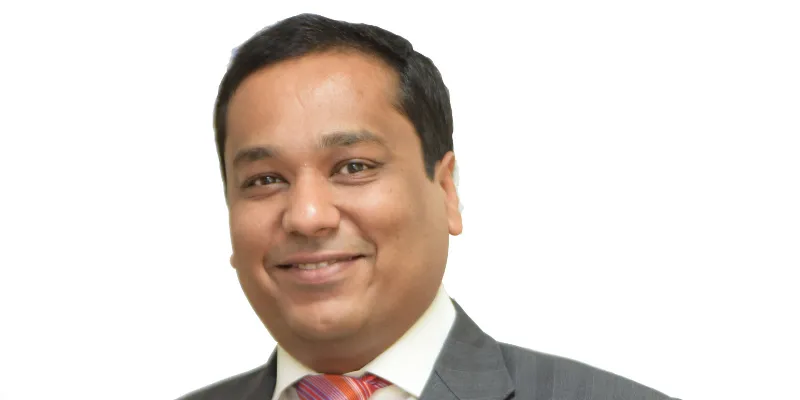This serial entrepreneur's startup works with developers to offer full-stack CPaaS solutions
To solve for enterprise-grade communication solutions sold as on-premise solutions, Pankaj Gupta established EnableX in Singapore in 2017.
Pankaj Gupta, the CEO and Founder of EnableX, is a serial entrepreneur who has been Founder, Board Member and CEO of several IT and telecom companies over the last two decades.

Pankaj Gupta.
Prior to starting EnableX, Pankaj was the MD of Arkadin India, a joint venture between ConferIndia and Arkadin, a prominent player in collaboration services, which is also a part of the NTT group.
During his assignment as the Country Manager for India and the MD, he understood that the adoption of remote communication was increasing and the world was only becoming closer. If an enterprise wanted to have a remote class, it would try to get on standalone products like Skype or a WebEx session, for they didn’t have that capability within campus applications.
Pankaj tells YourStory, "The need for seamless ways of communication and connection across functions and services was sure to explode. There were no or very few solutions that integrated communication directly into the context of any website or mobile application for a seamless end-to-end in-app conversation."
A large part of the enterprise-grade communication services is being sold as on-premise solutions. These on-premise legacy services are often siloed and are supported independently from the rest of the business applications and services within the organisation.
More often than not, says Pankaj, are they expensive, inflexible, and not easily customised to meet the unique needs of each organisation.
To solve the same, Pankaj intended to build the next-generation communication platform as a service. His idea was around a platform that would enable developers and product companies to embed communication capabilities within their applications and solutions, without having to invest in costly proprietary hardware.
EnableX was founded in August 2017 in Singapore, and now has a team of more than 40 full-time engineering, marketing and sales professionals. With the global headquarters in Singapore, EnableX has engineering teams in Delhi NCR and Bengaluru, and sales offices in Singapore, India, and Japan.
How does it work?
The EnableX platform is offered as PaaS, which essentially offers the users a pay-as-you-go model basis the usage of the platform. The utility includes the consumption of voice and video capabilities as well as usage of the platform for sending and receiving messages.
The startup primarily works with the developer communities, where it is a simple pay-as-you-go model, and then comes Telcos and service providers where the revenue is shared. EnableX also works with SaaS product companies like contact centres, recruitment firms, or edtech companies where it provides transaction-based models based on the number of customer engagements.
The full-stack offering comes with video, voice, SMS and messaging communication functionalities. Businesses can leverage EnableX to develop an omnichannel experience, allowing users to communicate on any device including Android, iOS, all web browsers, and various distribution channels.
The cloud technology platform at the startup is hosted with leading public cloud service providers that help roll out application programme interfaces (APIs) and software development kits (SDKs) to developers.
The developers then get access to EnableX portal after signing up, which lets them create their credentials and API keys that they use to connect securely to the platform. It also gives them access to comprehensive developer documentation, sample applications and code for ready reference.
Market landscape
In the hosted CPaaS industry, EnableX directly locks horns with global companies like Twilio and Vonage. As for on-premise CPaaS players, and Bandwidth.com are its primary competitors.
Pankaj says other service providers offer one or few pieces of communication capabilities in CPaaS but they are the first movers when it comes to a full-stack offering.
Looking at it from a consumer's point of view, the digital revolution has transformed the way users behave and interact with the business. The ever-evolving consumer expectation is causing businesses to think of new ways to improve customer experience (CX) and provide differentiated services.
"One way is to create it in-house by building real-time communication within their solution and applications. However, many organisations lack the skills and technical know-how to develop video and voice communications. Furthermore, building a communication platform is a heavy investment," says Pankaj.
Proposition and the way forward
The value proposition of the startup lies in offering a full-stack platform that offers a suite of communication capabilities as a service. Enterprises also get the ability to deploy it for a partner as a customised white-labelled solution.
Pankaj adds, "We use a lot of artificial intelligence (AI) and smart algorithms that allow us to keep the system running at optimal capacities and provide dynamic scalability to deal with the varied business needs. We have also built a number of proprietary technology components which help us deliver a better experience to the end-user."
The CEO has bootstrapped the venture on his own, and raised a small round of funding later from some angels from France, Singapore, Japan, and India.
He said the startup has a great opportunity to penetrate deep into the Asian market, and that it enjoys the advantage of a first mover. As for strategy, the team is looking at gaining significant market share by offering full-stack CPaaS. Such offering is expected to empower its customers to pick and choose functionalities that are easily compatible with their existing solutions and fulfil business requirements.
Having started with video communication as the primary focus area, EnableX has now expanded its set of offerings to include voice, video, chat, and SMS. Pankaj says a full-stack platform such as this one gives the startup the added advantage to address a larger market.
"More than 1,000 customers in India have experienced our product. Many of them have subsequently subscribed to it to build solutions around healthcare, financial services, social collaboration, and e-learning. Recently, we also rolled out a couple of SaaS offerings for enterprise video meetings and webinars in light of the current COVID-19 scenario," he enumerates.
Moving forward, the startup plans to expand its geographical presence to key markets across Asia-Pacific regions including Japan and Australia, while strengthening its presence in Vietnam and Indonesia.
Edited by Kanishk Singh









